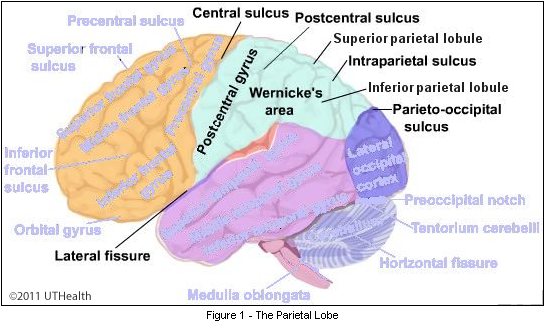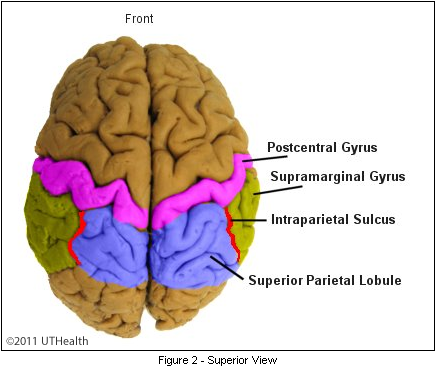Lab 1 - Overview of the Nervous System
Cerebral Lobes - Parietal Lobe
The parietal lobe is bounded rostrally by the central sulcus. The first gyrus behind the central sulcus is the postcentral gyrus. It is also called the somatosensory cortex, because the neurons in the postcentral gyrus receive information from sensory receptors in the body, including skin, muscles and joints. Like the motor cortex, the somatosensory cortex is topographically organized, because sensory information from the contralateral side of the body, head and face project to specific areas of the somatosensory cortex.
Posterior to the postcentral gyrus, the parietal lobe is divided by the intraparietal sulcus into the inferior parietal lobule and the superior parietal lobule. The inferior parietal lobule includes two adjacent gyri: (1) supramarginal gyrus (forms a cap over the caudal end of the lateral fissure), and (2) angular gyrus (forms a cap over the caudal end of the superior temporal sulcus). The boundaries between the supramarginal and angular gyri may not be perfectly clear, and some overlap exists. Remember that the supramarginal gyrus caps the lateral fissure, and the angular gyrus caps the superior temporal sulcus.

